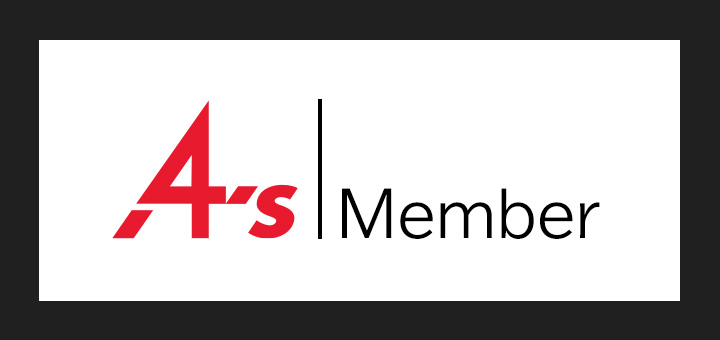Unpredictable markets often cause entrepreneurs to make business decisions with caution. This often results in businesses being placed on strict budgets, leading leaders to inadvertently overload current employees to avoid hiring additional staff.
While this strategy is effective for managing a tight budget, it can do more harm than good if leaders push their teams too far for too long. Fortunately, there are observable cues that leaders can look for in employees and the business to make changes before it’s too late. Below, 20 Forbes Business Council members share signs leaders must watch for that indicate they’re pushing their current team members too hard.
1. More Focus On Time And Money
When budget takes priority over purpose, dysfunction follows. A key sign to watch for is when focus shifts from outcomes to how time and money are spent. To fix this, immediately realign with purpose to restore meaning to the team’s efforts. Cut low-value work, not just costs. Support your team by reducing any unnecessary noise caused by “tight rein” bureaucracy and micromanagement. – Kevin Brady, Gnomon, LLC
2. Rising Anxiety Or Confusion About Priorities
A key sign is rising anxiety or confusion about priorities. When people lose clarity, it signals overload. Leaders must ensure stability, transparency, and a secure environment by resetting focus, simplifying goals, and reinforcing the idea that protecting the team comes before short-term savings. – Beate van Loo-Born, PhysikInstrumente (PI)
3. A Lack Of Productive Communication
One sign leaders must watch for is a noticeable drop in proactive communication, especially from typically high-performing team members. Things like missed deadlines and delayed responses often signal emotional burnout or cognitive overload. An immediate step we take is to realign priorities and redistribute workload transparently. Initiate open, one-on-one conversations to understand employee capacity. – Guy Mannino, Verdek
4. A Decline In Progress
I’m lucky to have team members who feel comfortable speaking up about their workloads, so focusing on the flow of work is most useful to me. When task lists continue to grow and movement seems to stall, it’s a clear sign there’s nowhere for the work to go. For immediate relief, we pause non-essential operations until workloads are moving more smoothly or we’re able to hire additional staff. – Kelly Turner, Civitas Strategies
5. Out-Of-Character Employee Behavior
To paraphrase A League of Their Own, “There’s no crying in [this industry].” Watch for non-verbal cues like changes in temperament, participation, enthusiasm, and even things like a messy desk if that’s out of character for an employee. And watch for crying because things are not good if there’s crying. Simply asking how someone is doing can determine if work needs to be reassigned or shortcuts need to be taken. – Rob Davis, NOVUS
6. A Drop In Engagement
If you notice a drop in engagement, lower productivity, more absences, or higher turnover, your team might be overloaded. Make it a habit to have regular check-ins to gauge stress levels and take quick action, whether that’s rebalancing tasks, adjusting timelines, or adding extra support. By staying connected and managing workloads, you can prevent burnout and keep your team motivated and effective. – Shahzeb Ali, INK IT Solutions
7. Employees Automatically Agreeing With Leaders
One sign you’re pushing people too hard is when they stop disagreeing with you. Exhausted teams don’t argue or share ideas—they just nod along. If it comes to this point, it’s crucial to pause non-critical work for at least a week. It’s a much cheaper fix than dealing with hidden burnout costs. – Rytis Lauris, Omnisend
8. Only Daily Tasks Being Performed
If employees seem to be just doing their usual daily tasks without taking initiative or offering up new ideas, it’s possible that they’re overwhelmed. If you spot this happening, your first move should be to sit down with each team member individually to get a clear picture of their workload. From there, put non-essential projects on the back burner and consider bringing in freelance help. – Sara Jones, Centre of Excellence
9. Missed Timelines
A clear sign is when timelines slip despite strong effort. Track KPIs and assess workload against results. Don’t start hiring just because someone feels stretched thin. Review priorities and identify gaps first. If needed, then hire the right person in the right role to expand capacity and drive execution, not just to relieve pressure. – Adam Shaw, VTS Global
10. A Decline In Meeting Discussions
One sign is when feedback and open dialogue in meetings stops or significantly changes. Refresh meeting cadence and design agendas to leave more time for discussion around why you are asking what you are asking. Simplify your asks, and be aware that teams become demotivated very quickly when they are overloaded. Encourage teams to take time to reset and remind them of the value of doing so. – Katherine Dei Cas, EMD Electronics
11. A Shift To Employees Being Reactive
A key sign would be a shift in employees being reactive rather than proactive. This can lead to tasks being delayed and a growing lack of attention to detail. The best way to address this matter is to stay connected in short daily standup meetings where you can adjust timelines as needed, reprioritize tasks, and solve impediments on the spot. – Oubai Al Hendi, twigBIG
12. Employees Operating In Survival Mode
The challenge is managing the tension, not choosing a side. When budget discipline and team sustainability are out of balance, top performers stop innovating and start seeking detailed instructions, which is survival mode thinking. Begin by asking, “How do we maintain budget goals while supporting team capacity?” This polarity question reveals solutions that honor both needs. – Kent Gregoire, Symphony Advantage
13. A Lack Of Focus
The most obvious sign is a lack of focus. Employees may be constantly struggling to meet deadlines, which leads to a lack of engagement and increased attrition. The most immediate and effective step that leaders can take is to prioritize tasks and projects. Put non-essential and non-critical projects on the back burner. Then, ensure an equitable distribution of work amongst team members. – Anupam Bhattacharya, Invictus Search Pte Ltd
14. A Spike In Errors And Missed Deadlines
One clear sign is a spike in errors or missed deadlines from normally reliable staff. It signals burnout and overload. An immediate step is to reprioritize tasks, cut non-essential work, and redistribute the workload realistically to protect team well-being and sustain performance. – Beth Worthy, GMR Transcription Services, Inc.
15. Resignations Or Quiet Quitting
Quitting or quiet quitting is a big risk when running lean. If someone’s taking on more work, show that you value them. For example, a one-time stipend can re-energize them and reinforce their importance in the workplace. Small gestures like this can boost morale and help retain key talent when it matters most. – Sherry Taylor, Starbucks
16. A Drop In The Three E’s
One key sign of employee overload is when you see a drop in the three E’s of effectiveness, efficiency, and empowerment. If one of these breaks, you need to fix the structure, not just the people. Build candor, pause non-essential work, and redistribute the load. Saving money by burning people out will cost you more in the long run. – Ahsan Khaliq, Saad Ahsan – Residency and Citizenship
17. Increased Workload
I review the number of tasks and activities executed by the team, as well as the hours spent on calls and meetings. If there is a growing trend of the workload increasing, I either reduce the number of priorities, postpone or cancel projects, or recruit additional people to extend the capacity of the team. – Gaidar Magdanurov, Acronis
18. Employee Self-Silencing
One sign of burnout is when employees start self-silencing. They say, “I’ve got it” while struggling and fear speaking up, leading to hidden overload. A fresh solution is to create a list of tasks they can stop doing. Ask your team, “What tasks drain you but add little value?” Cutting low-impact work restores energy, trust, and focus. Subtraction is sometimes the smartest support. – Vaishali Dev, Microteq Engineering, Inc,
19. No Time For Employees To Do Their Actual Jobs
If your team needs to “find time” to do their actual job, you’re pushing too hard. Back-to-back meetings, endless Slack pings, and weekend catch-ups aren’t hustle—they’re red flags. Productivity isn’t about being busy; it’s about creating impact. Protect deep work and cut the noise. Otherwise, you’ll burn out your best people while thinking you’re scaling. – Lior Pozin, AutoDS
20. Blurred Responsibilities
Pay attention to blurred responsibilities. If a pay-per-click specialist is suddenly asked to manage paid social tasks, then handle social posts, and later take on email campaigns—that’s a red flag. When processes rely too heavily on individuals with broad meta-skills, scaling becomes significantly harder. Leaders should step back, reassign roles more clearly, and streamline workflows to prevent burnout. – Mykola Lukashuk, Marketing Link LLC





